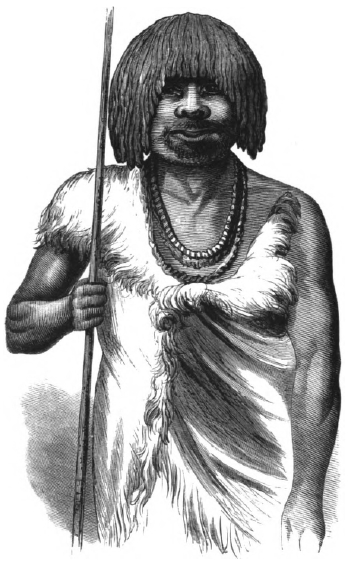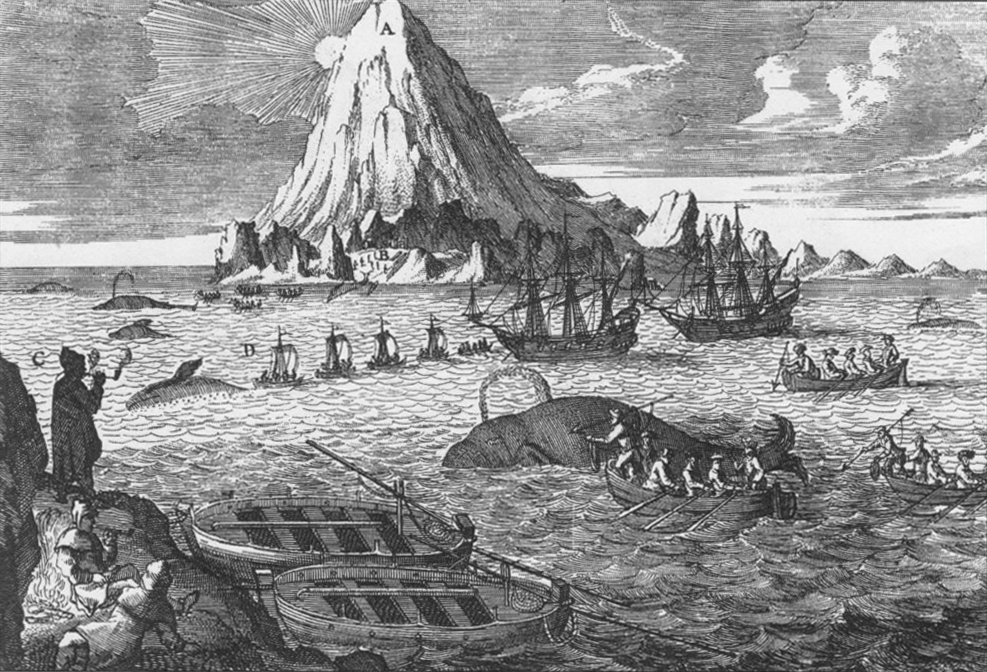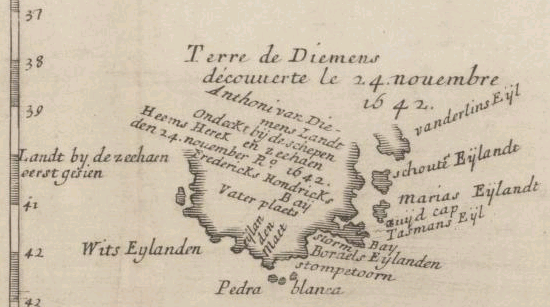|
Woureddy
Woureddy (c.1790 – 7 July 1842), also known as Wurati, Woorady and Mutteelee, was a leading warrior and cleverman from the Nuenonne language, Nuenonne clan of Aboriginal Tasmanians in Australia. He acted as a guide for George Augustus Robinson in his expeditions to round up the remaining Indigenous people of Tasmania during the early 1830s. Woureddy was a highly significant figure in communicating Indigenous culture to Robinson and his disclosures remain a prime source of information about pre-colonial Aboriginal Tasmanian customs. He was also the husband of Truganini for period of around ten years. His image, and the busts of him and Truganini have over time been utilised and incorporated in conversations about the past in Tasmania. The image by Thomas Bock is utilised in Cassandra Pybus's biography of Truganini.Illustrations between page 76 and 77, biography of Woureddy is on pages 283-285, the book has neither index or footnotes, see also - , Early life Woureddy was bor ... [...More Info...] [...Related Items...] OR: [Wikipedia] [Google] [Baidu] |
Truganini
Truganini (also known as Lallah Rookh; c. 1812 – 8 May 1876) was an Aboriginal Tasmanian woman. She was one of the last native speakers of the Tasmanian languages and one of the last individuals solely of Aboriginal Tasmanian descent. Truganini grew up in the region around the D'Entrecasteaux Channel and Bruny Island. Many of her relatives were killed during the Black War. From 1829 she was associated with George Augustus Robinson, later an official of the colonial government of Van Diemen's Land. She accompanied him as a guide and served as an informant on Aboriginal language and culture. In 1835, Truganini and most other surviving Aboriginal Tasmanians were relocated to Flinders Island in the Bass Strait, where Robinson had established a mission. The mission proved unsuccessful, and disastrous for the Aboriginal Tasmanian people. In 1839, Truganini, among sixteen Aboriginal Tasmanians, accompanied Robinson to the Port Phillip District in present-day Victoria. She soon sev ... [...More Info...] [...Related Items...] OR: [Wikipedia] [Google] [Baidu] |
Kikatapula
Kikatapula ( – 13 May 1832) was a leading Indigenous figure during the British invasion and colonisation of Van Diemen's Land, later known as Tasmania. Also called Kickerterpoller or Black Tom Birch, he spent part of his youth living with the colonists, learning English and being baptised as a Christian. During the 1820s, he withdrew from British ways, and became a feared and formidable leader of Indigenous resistance during the early stages of the Black War. He was eventually caught and jailed and, with limited options, he agreed to act as a guide for a roving party of armed colonists to capture other Aboriginal Tasmanians or Palawa as they are also known. Kikatapula was then ordered to accompany George Augustus Robinson on his 'friendly mission' to round up the remaining Indigenous people and exile them to Flinders Island. After the successful removal of the most notable Palawa (including himself), Kikatapula died guiding Robinson during a later expedition in 1832. Early l ... [...More Info...] [...Related Items...] OR: [Wikipedia] [Google] [Baidu] |
Roof Shingle
Roof shingles are a roof covering consisting of individual overlapping elements. These elements are typically flat, rectangular shapes laid in courses from the bottom edge of the roof up, with each successive course overlapping the joints below. Shingles are held by the roof rafters and are made of various materials such as wood, slate, flagstone, metal, plastic, and composite materials such as fibre cement and asphalt shingles. Ceramic roof tiles, which still dominate in Europe and some parts of Asia, are still usually called tiles. Roof shingles may deteriorate faster and need to repel more water than wall shingles. They are a very common roofing material in the United States. Etymology and nomenclature Shingle is a corruption of German meaning a roofing slate."Shingle" def. 1. Whitney, Wi ... [...More Info...] [...Related Items...] OR: [Wikipedia] [Google] [Baidu] |
Macquarie Harbour Penal Station
The Macquarie Harbour Penal Station, a former British colonial penal settlement, established on Sarah Island, Macquarie Harbour, in the former colony of Van Diemen's Land, now Tasmania, operated between 1822 and 1833. The settlement housed male convicts, with a small number of women housed on a nearby island. During its 11 years of operation, the penal colony achieved a reputation as one of the harshest penal settlements in the Australian colonies. The formal penal station is located on the Sarah Island that now operates as an historic site under the direction of the Tasmania Parks and Wildlife Service. Rationale for establishment The penal station was established as a place of banishment within the Australian colonies. It took the worst convicts, those who had reoffended and those who had escaped from other settlements. The isolated land was ideally suited for its purpose. It was separated from the mainland by the wide expanse of river, surrounded by a mountainous wilde ... [...More Info...] [...Related Items...] OR: [Wikipedia] [Google] [Baidu] |
Toogee People
The Toogee were an Aboriginal Tasmanian people who lived in Western Tasmania, Australia, before European settlement. Their Toogee people included Macquarie Harbour. The Toogee consisted of two different bands, the Lowreenne and Mimegin. They made stone tools, including those from Darwin Glass, a natural glass formed from a meteorite impact. The archeological record for this region goes back to 20,000 years ago with relics found in the Kutikina Cave. They also left behind middens of shells along the coast. The people living to the north near the Pieman River were the Peternidic band, and to the south near Port Davey was the Ninene. A geological feature south of Tasmania is named after them, the Toogee sub basin. This is in the northernmost part of the South Tasman Rise The South Tasman Rise is an area of seafloor that lies 550 km south of Hobart, Tasmania in the Southern Ocean where water depths are about 1,500 metres. The South Tasman Rise is also known as the Tasma ... [...More Info...] [...Related Items...] OR: [Wikipedia] [Google] [Baidu] |
National Portrait Gallery, Canberra, Australia - Joy Of Museums - Woureddy, An Aboriginal Chief Of Van Diemen's Land
National may refer to: Common uses * Nation or country ** Nationality – a ''national'' is a person who is subject to a nation, regardless of whether the person has full rights as a citizen Places in the United States * National, Maryland, census-designated place * National, Nevada, ghost town * National, Utah, ghost town * National, West Virginia, unincorporated community Commerce * National (brand), a brand name of electronic goods from Panasonic * National Benzole (or simply known as National), former petrol station chain in the UK, merged with BP * National Car Rental, an American rental car company * National Energy Systems, a former name of Eco Marine Power * National Entertainment Commission, a former name of the Media Rating Council * National Motor Vehicle Company, Indianapolis, Indiana, USA 1900-1924 * National Supermarkets, a defunct American grocery store chain * National String Instrument Corporation, a guitar company formed to manufacture the first resonator gui ... [...More Info...] [...Related Items...] OR: [Wikipedia] [Google] [Baidu] |
George Arthur
Sir George Arthur, 1st Baronet (21 June 1784 – 19 September 1854) was Lieutenant Governor of British Honduras from 1814 to 1822 and of Van Diemen's Land (present-day Tasmania) from 1823 to 1836. The campaign against Aboriginal Tasmanians, known as the Black War, occurred during this term of office. He later served as Lieutenant Governor of Upper Canada from 1838 to 1841, and Governor of Bombay from 1842 to 1846. Early life George Arthur was born in Plymouth, England. He was the youngest son of John Arthur, from a Cornish family, and his wife, Catherine, daughter of Thomas Cornish. He entered the army in 1804 as an ensign and was promoted lieutenant in June 1805. He served during the Napoleonic Wars, including Sir James Craig's expedition to Italy in 1806. In 1807 he went to Egypt, and was severely wounded in the attack upon Rosetta. He recuperated and was promoted to captain under Sir James Kempt in Sicily in 1808, and participated in the Walcheren expedition in 1809. ... [...More Info...] [...Related Items...] OR: [Wikipedia] [Google] [Baidu] |
Lieutenant-Governor Of Van Diemen's Land
The governor of Tasmania is the representative in the Australian state of Tasmania of the Monarch of Australia, currently King Charles III. The incumbent governor is Barbara Baker, who was appointed in June 2021. The official residence of the governor is Government House located at the Queens Domain in Hobart. As the sovereign predominantly lives outside Tasmania, the governor's primary task is to perform the sovereign's constitutional duties on their behalf. As with the other state governors, the governor performs similar constitutional and ceremonial functions at the state level as the governor-general of Australia does at the national level. The position has its origins in the positions of commandant and lieutenant-governor in the colonial administration of Van Diemen's Land. The territory was separated from the Colony of New South Wales in 1825 and the title "governor" was used from 1855, the same year in which it adopted its current name. In accordance with the conventi ... [...More Info...] [...Related Items...] OR: [Wikipedia] [Google] [Baidu] |
Whaling
Whaling is the process of hunting of whales for their usable products such as meat and blubber, which can be turned into a type of oil that became increasingly important in the Industrial Revolution. It was practiced as an organized industry as early as 875 AD. By the 16th century, it had risen to be the principal industry in the Basque coastal regions of Spain and France. The industry spread throughout the world, and became increasingly profitable in terms of trade and resources. Some regions of the world's oceans, along the animals' migration routes, had a particularly dense whale population, and became the targets for large concentrations of whaling ships, and the industry continued to grow well into the 20th century. The depletion of some whale species to near extinction led to the banning of whaling in many countries by 1969, and to an international cessation of whaling as an industry in the late 1980s. The earliest known forms of whaling date to at least 3000 BC. Coastal ... [...More Info...] [...Related Items...] OR: [Wikipedia] [Google] [Baidu] |
Van Dieman's Land
Van Diemen's Land was the colonial name of the island of Tasmania used by the British during the European exploration of Australia in the 19th century. A British settlement was established in Van Diemen's Land in 1803 before it became a separate colony in 1825. Its penal colonies became notorious destinations for the transportation of convicts due to the harsh environment, isolation and reputation for being inescapable. Macquarie Harbour and Port Arthur are among the most well-known penal settlements on the island. With the passing of the Australian Constitutions Act 1850, Van Diemen's Land (along with New South Wales, Queensland, South Australia, Victoria, and Western Australia) was granted responsible self-government with its own elected representative and parliament. On 1 January 1856, the colony of Van Diemen's Land was officially changed to Tasmania. The last penal settlement was closed in Tasmania in 1877. Toponym The island was named in honour of Anthony van ... [...More Info...] [...Related Items...] OR: [Wikipedia] [Google] [Baidu] |
De Witt Island
De Witt Island, also known as Big Witch, is an island located close to the south-western coast of Tasmania, Australia. The island is the largest of the Maatsuyker Islands Group, and comprises part of the Southwest National Park and the Tasmanian Wilderness World Heritage Site. The island is listed on the Australian Register of the National Estate. Location and features De Witt Island lies some south of Louisa Bay, on Tasmania's south coast. Abel Tasman discovered it in 1642 and named it Witsen or Wits Eijlanden. The island is broadly triangular in shape, some across, with cliffs ranging from high to the south on all sides except a part of the central north coast. The highest parts of the island are located very close to the south coast, and enclose a north-facing basin. The island's summit is located very close to its southernmost point. Although currently uninhabited, it has a long history of human usage, including logging and occasional habitation.Brothers, Nigel; Pemb ... [...More Info...] [...Related Items...] OR: [Wikipedia] [Google] [Baidu] |






